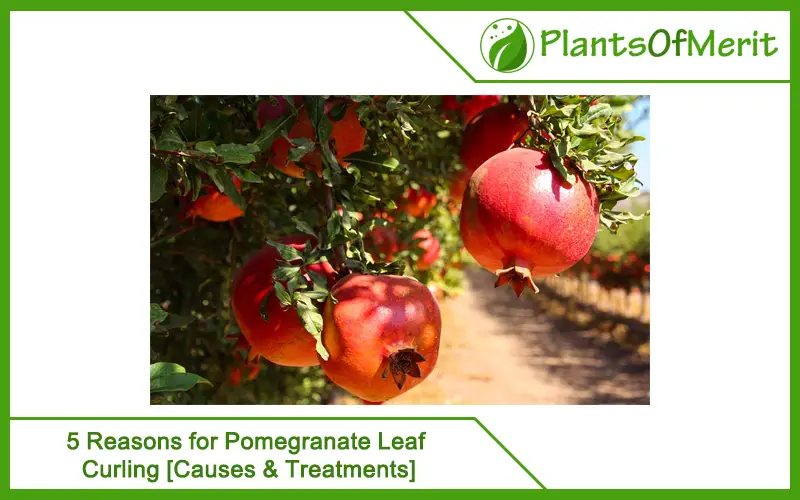Pomegranate is a pretty versatile fruit. It is good for boosting your hemoglobin levels, it is good for your digestive system and it is amazing with both your sweet and savory foods. That’s how multipurpose it is. You can add it as a topping over your salads for a juicy crunch or you can extract the juice for that extra fresh kick in the morning.
If you grow your pomegranate trees in the backyard, chances are that you will face one issue or the other at some point. Out of them, the leaf curling problem is one of the most potent complications. There could be several contributing reasons and we will explore all of them in detail in this guide.
Why is my Pomegranate Leaf Curling?
Is it due to the external parameters or is it something that you are doing wrong? Well, the possibilities are quite diverse. For a better understanding, we have sorted out the top 5 potent reasons and what you can do to fix the issue.
1. Pest attack
Like other fruit plants, even your pomegranate plant is at risk of being under pest attack. A variety of pests, including whiteflies, mealybugs, aphids and scales not just feed on the fruit but also the leaves. Since they are almost negligible when seen with naked eyes, chances are that you will not notice them initially on the plant.
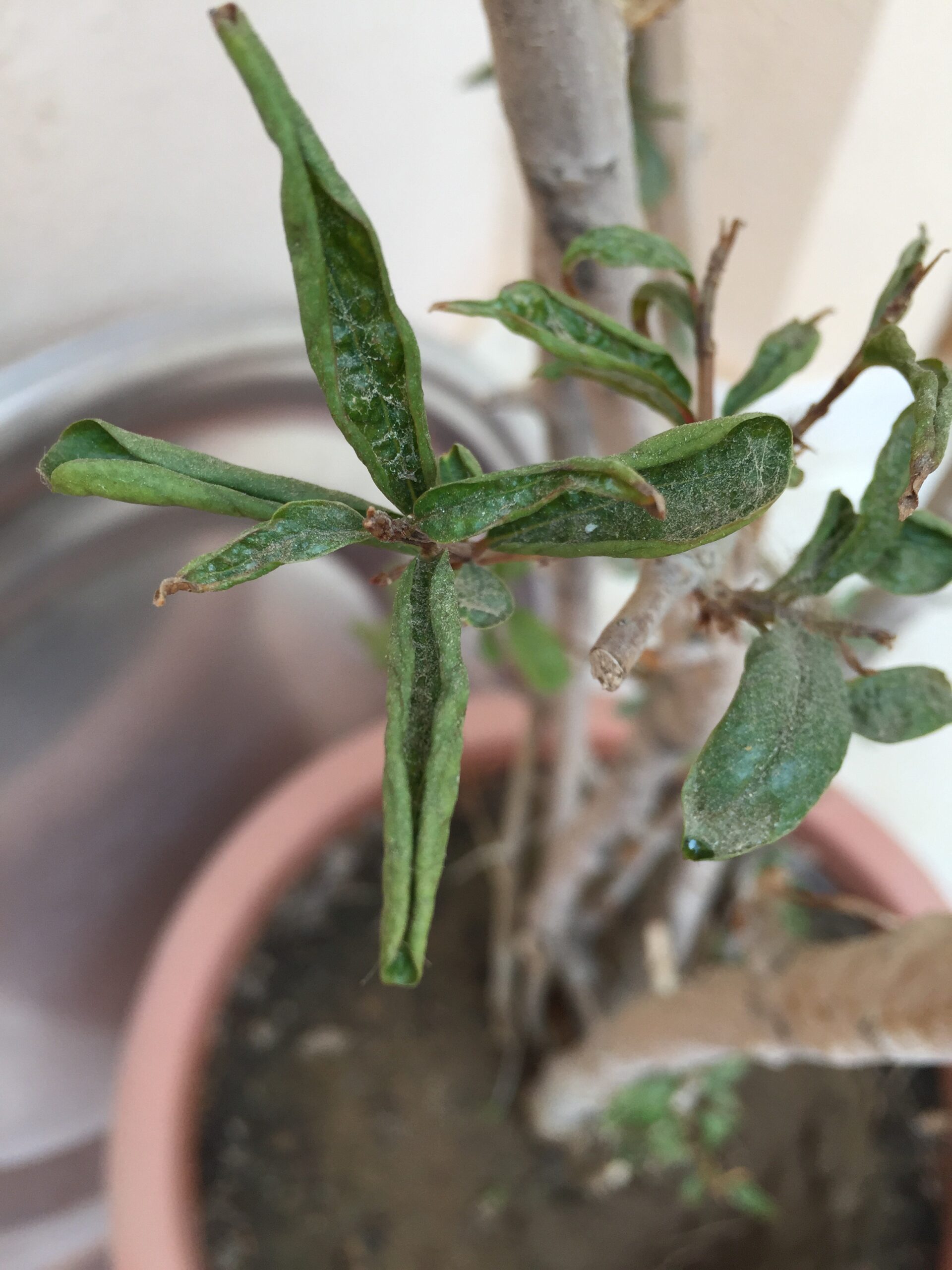
What we’d recommend doing is checking underneath the leaves since that’s where they are mostly located. Several of the pests secrete honeydew on the leaves of the pomegranate plant, which enhances the risks of molding, which is one of the most common reasons behind the leaf curling.
Leafrollers are also quite common on pomegranate leaves. If left to themselves, they contribute to the leaves curling, which is one of the reasons why they destroy the plant’s growth in the long run.
Treatment
The first fix is to blast a spray of water on the leaves. Doing so will eliminate any surface-level pest on the leaves. After that, spray a good amount of pesticide on the plant to prevent their recurrence in the future.
2. Anthracnose
Although quite rare, Anthracnose is a type of fungal disease that is often noticed in many pomegranate leaves. Besides damaging the growth of the plant, the fungal disease also contributes to the curling and distortion of the leaves.
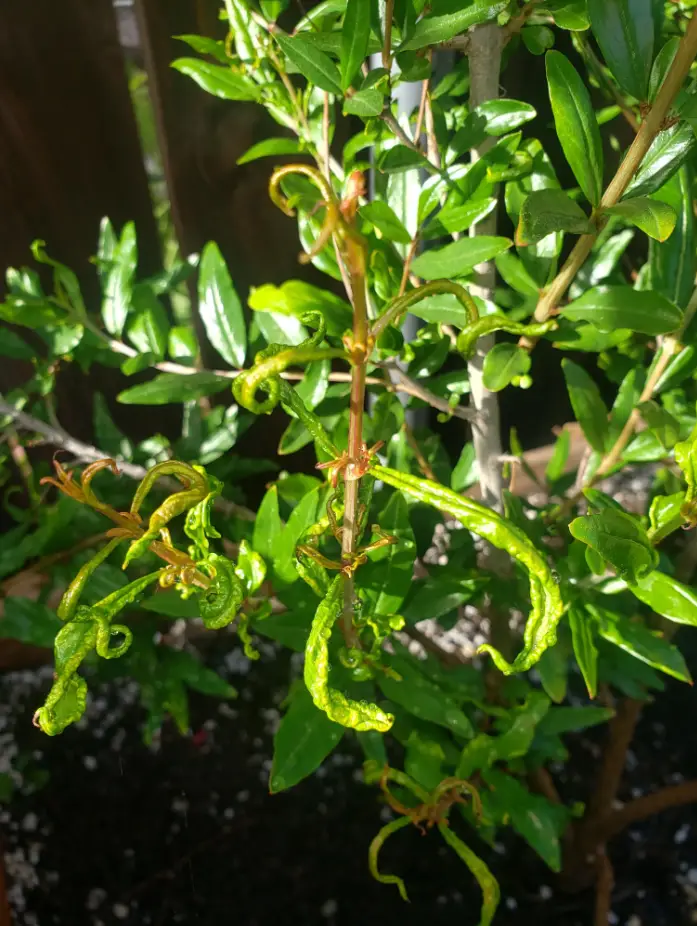
The fungal infestation gradually moves from the leaves to the stem and roots in the plant. So, if you don’t tend to it quickly, the fungus will spread pretty rapidly, leading to complications and even end up killing the plant.
Treatment
The easiest and quickest fix for this is with some fungicide. Before you spray the fungicide, we’d recommend that you look for the curled leaves and snip them out of the tree. If required, you can use an organic fungicide that won’t damage the quality of the fruit.
3. Nutrient deficiency
Pomegranate plants are quite sensitive and have very specific requirements when it comes to their growth. If you notice the leaves turning yellowish brown around the edges and then curling inwards, it is a very common sign of nutrient deficiency in the plant.
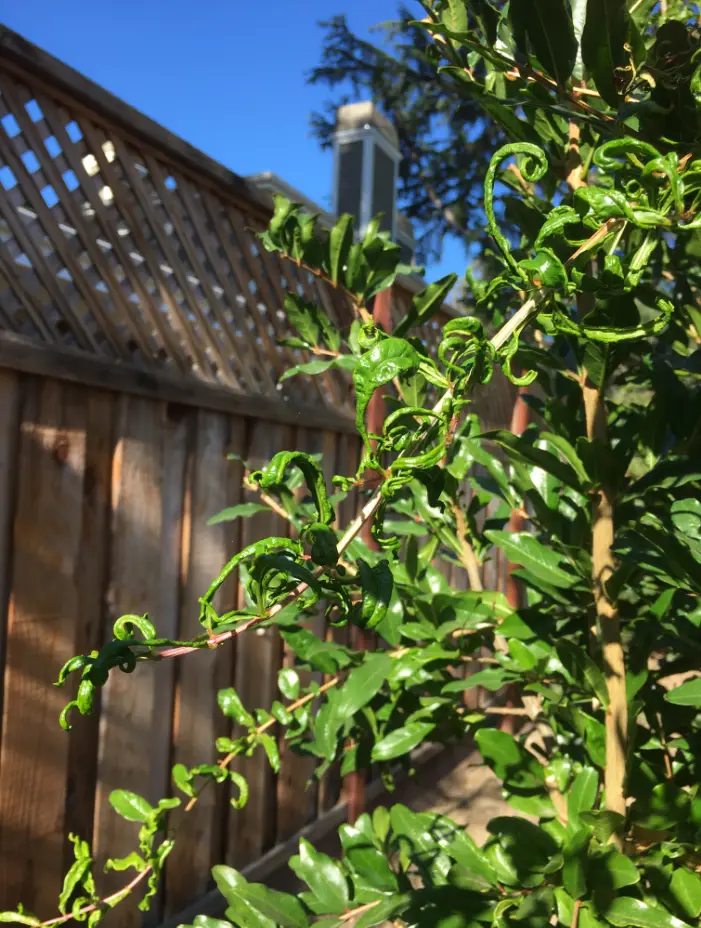
What you have to do is check the soil’s pH first. Ideally, you want the pH to be around 5.5 to 7.0. This is the optimal range for the growth of the pomegranate plant. If the pH is too low or too high, it will end up affecting the nutrient uptake in the plant.
Treatment
As we said, check the soil’s pH first. If you notice the drastic change, your first focus is to fix the pH levels. If it’s too acidic, pour in some garden lime to make it more alkaline. If it’s too alkaline, some extra soil potting mixture can resolve the issue. Also, a slow-releasing fertilizer works very well in keeping the nutrient levels in check.
4. Underwatering
Pomegranates are typically grown in tropical countries, which mean that they are dependent on a lot of water for their growth. If you aren’t watering the plant optimally, chances are that it will directly impair the plant’s leaves and end up causing issues with curling and discoloration.
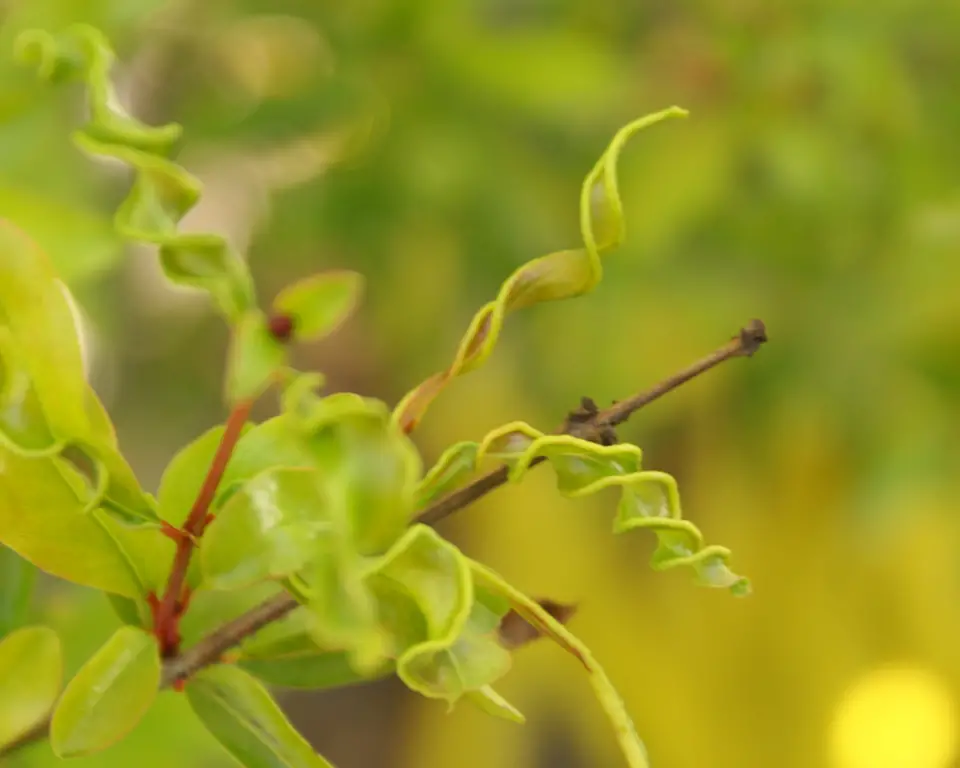
You want to keep a check on the moisture levels. You can either check manually or you can go ahead and check using a moisture meter.
Treatment
If you find the moisture levels to be quite low, the easiest way to fix that is by rewatering the soil promptly and without any second thoughts. However, you don’t want to overdo the watering since that ends up causing chaos.
5. Lacking Sunlight exposure
As we said, pomegranates are tropical plants, which mean that they need constant sunlight exposure, failure of which will lead to the curling and discoloration of the leaves. Ideally, you want to aim for 6-7 hours of constant sunlight exposure because that’s what makes all the difference.
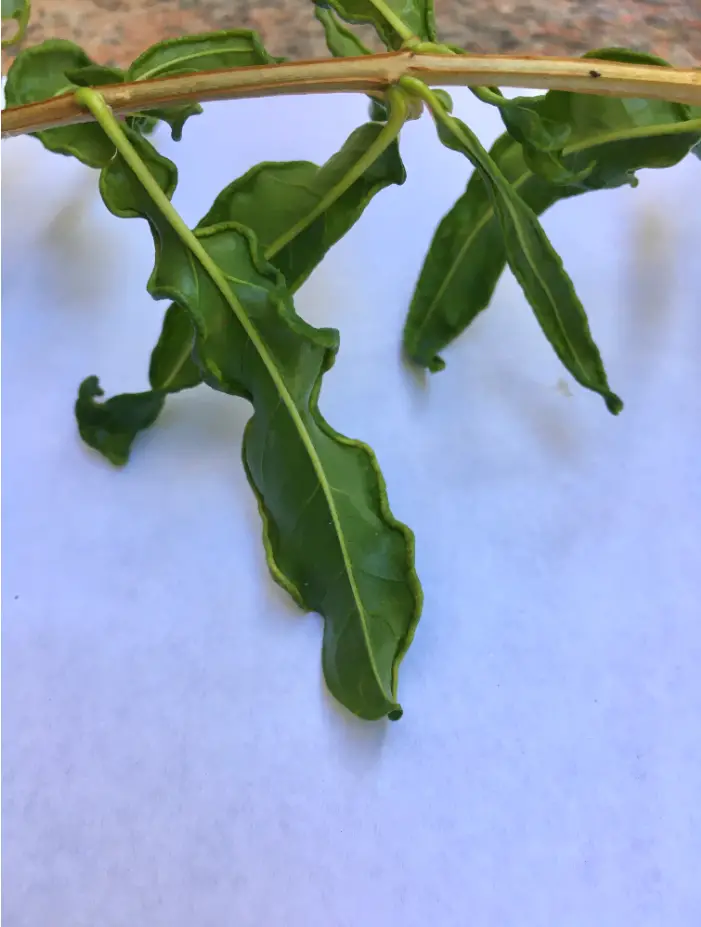
If you have planted it somewhere in a shaded area, it will end up affecting the growth and the quality of the plant. In case you are growing it indoors as an ornamental plant, we’d recommend taking it outside now and then.
Treatment
If you notice the curling of the leaves, start by snipping off the leaves that are affected. Once that’s done, assess if it’s due to pests, diseases, or sunlight exposure. What you can do is ensure that your pomegranate plant is getting enough sunlight exposure.
Conclusion
Pomegranate trees are one of the most versatile ones that you can get your hands on. However, they do come with their fair share of challenges when it comes to growing them. If you are experiencing issues, we hope this article gives you all the insights that you need to follow through and fix the issue without any additional burden. Just ensure that you focus on finding the issue first and then apply the remedy.

